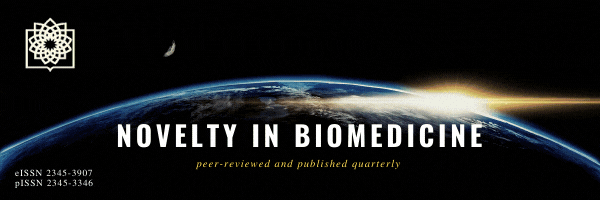Effect of 8 Weeks of High Intensity Interval Training on Plasma Levels of Adiponectin and Leptin in Overweight Nurses
Novelty in Biomedicine,
Vol. 4 No. 3 (2016),
3 July 2016,
Page 87-92
https://doi.org/10.22037/nbm.v4i3.10474
Background: High intensity interval training (HIIT) is a novel training method which has received most attention in recent years. The aim of this study was to examine the effect of 8 weeks of high intensity interval training (HIIT) on plasma levels of adiponectin and leptin in overweight nurses.
Materials and Methods: 27 nurses (mean age 25.81±60 years, height 158.01±67 cm and weight 69.41±25 kg) were voluntarily selected and randomly assigned to three groups (each group 9 subjects): 1. HIIT (type 1) including 8 seconds of sprint running and 12 seconds of active recovery 2. HIIT (type 2) including 40-m shuttle run with maximum speed 3. Control group. HIIT (type 1) was performed for eight weeks, three sessions per week, each session 6-9 min. With more than 90% HRmax. HIIT (type 2) was applied for eight weeks, three sessions per week with more than 90% HRmax. The control group did not participate in any training protocol.
Results: The data were analyzed by the dependent t test and ANOVA. The results showed that the HIIT (type 1) and (type 2) had significant effects on plasma leptin decrease and plasma adiponectin concentration increase in nurses. One-way analysis of variance (ANOVA) was used to analyze the intergroup data at p˂0.05.
Conclusion: The results showed a significant difference in the variables (leptin and adiponectin) among HIIT (type 1), HIIT (type 2) and control.
